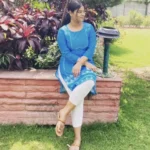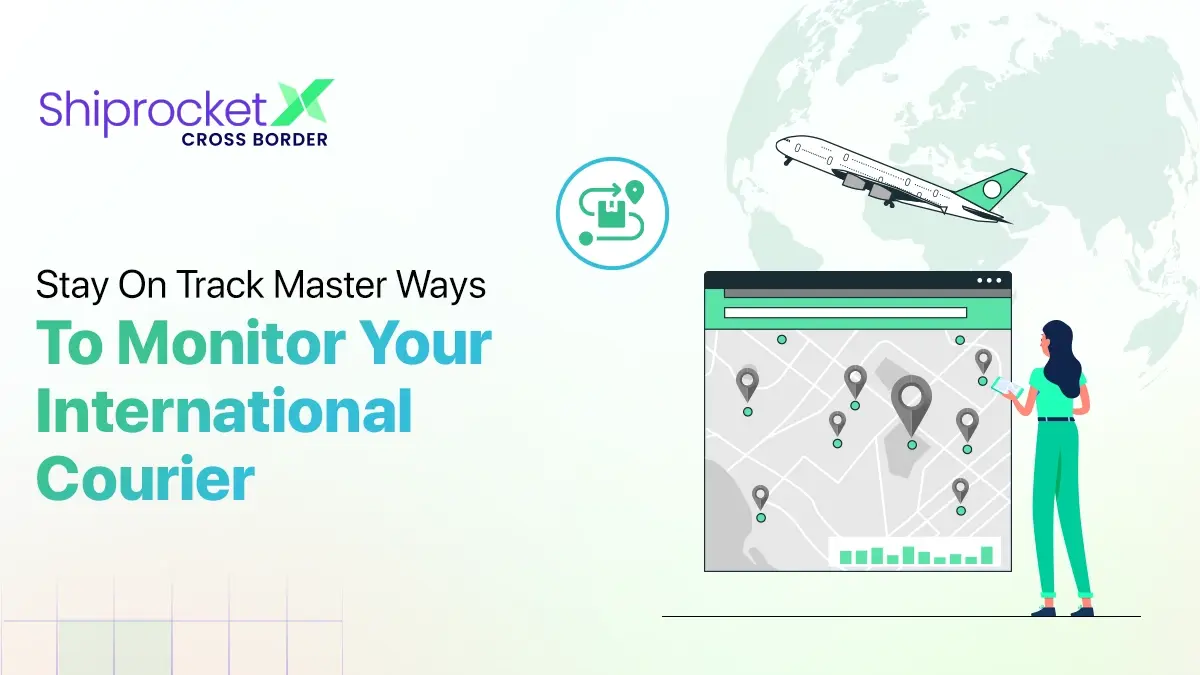Return Merchandise Authorisation: Managing The Return Process!
Making a sale can be quite straightforward. However, when your buyers choose to return your products, the returns processing can be rather complicated. A well-planned and defined process will be needed to ensure seamless management of this process. Ever wondered how you can make your returns process efficient and streamlined? To make it seamless and easy to access, you should deploy a returns system known as Return Merchandise Authorisation (RMA). The RMA process acts as a base for efficient and hassle-free returns and optimised management of inventory. As an extension, it also streamlines the logistics processes involved in your reverse logistics workflows. By promoting product exchanges over returns, automated RMAs can assist you in regaining up to 35% of your revenue.
This blog will give you a complete insight into the Return Merchandise Authorisation process and why any eCommerce business needs to have it.

Return Merchandise Authorisation: A Detailed View
RMA or Returns Merchandise Authorisation is a step-by-step process that is used by all eCommerce businesses to manage their returns processes. It enables them to have strong control of their returns while also giving them the freedom to organise the returns of products in a structured manner. It acts as a framework for those customers who intend to initiate returns and facilitate the processing and tracking of these returns. Software can be employed to manage and handle the RMA process as it ensures that there are no interruptions in the process.
Know RMA Number
A unique sequence of numbers will be assigned to any returns initiated by the eCommerce enterprise. This sequence is termed Return Merchandise Authorisation Number. It is used to track the return of a specific product and it enables you to update your inventory levels accordingly.
The RMA number is also called the MRA number. These indicate the same sequence. RMA number is advantageous as it gives the eCommerce business and the customer a simple and efficient method to keep track of the product returned. It also avoids any delays in return processing. RMA number allows efficient and less scanning thereby saving time and avoiding any kind of errors.
Significance of RMA Number For Businesses
You might question the need for an RMA system for your business, but you will realise the importance of having it when your business will have to deal with multiple return requests at the same time. Handling all of the return process particularities will be challenging and there is a high chance that you will get frustrated. The frustration can also result in errors which will not serve your business well. Thus, using an RMA system is essential.
The RMA system is vital as your customers are not buying things from a physical store. They make their purchases online and hence they are not allowed to physically experience the shopping process. This elevates the chances of making wrong choices and purchases. Integrating a returns process with an RMA system enables a hassle-free experience while minimising the risk of buyers making the wrong purchases. The RMA process also enhances the satisfaction of your customers and may strengthen your brand value, giving you an edge over your competitors.
The chances are greater that your customers will shop with you repeatedly when you give them the option of returns. It is also necessary for you to understand that elimination of refund requests entirely is impossible but there are a couple of things that you can do to minimise them. Discounts, vouchers, defined refund policies, and store credit will help you reduce refund processes.
An RMA Form and Its Content
An RMA form is an application that is used whenever products are required to be returned to an eCommerce business. This document will outline the reasons for return along with the next steps to be followed in the process.
The RMA application form can be placed within the product parcel sent or can be generated upon request by the customer. The customer will need to fill out the RMA form and enclose it with the parcel returned.
An RMA form must include the following:
- Customer data: All the basic details of the purchaser like name, address, contact information, etc., must be included.
- Product information: The product details like name, model, serial number, purchase date, payment details, etc., must be included on the form.
- Return reason: A menu or even a blank space must be there for the customer to select or write down the reason for the return. It comes in handy when the merchant decides to process refunds or provide a necessary resolution for the issue.
- Resolution: The business can choose to provide a resolution through replacement, discounts, store credit, or even refunds. You can give your customers the choice of what they prefer for easier returns and better customer satisfaction.
Defining RMA Process
To understand the RMA process better, let us take a closer look at what this process entails:
- Initiation of returns by the buyer: The initiation of a return demand by a customer marks the beginning of the RMA process. Instead of directly sending the purchased item back, the customer will need to request authorisation from the eCommerce store to begin this process. Today, such a process is initiated through the business’ website or application. Some eCommerce businesses also have support channels for the same.
- Merchant approval: When a returns request is received, the merchant first evaluates the need for a return stated by the buyer. Based on the policies of the company as well as the nature of the return, the business can decide if it wants to authorise such an action. Authorisation of returns can be granted for several reasons like defects in the shipped item, incorrect item shipping, dissatisfaction of buyer, and more.
- RMA Number issuance: If the merchant approves of the returns process, the business will need to assign an RMA number that is unique to a specific purchase or customer. It acts as a reference for the seller and the buyer during the entire return journey. It makes tracking easier and makes sure that the right item is returned.
- Instructions for returns shipping: The customer will be given a detailed set of rules to follow for the returns process. These must be strictly adhered to and the shipping address and packing requirements are also to be met. The eCommerce business also stipulates a timeframe within which the returns must be completed to be valid.
- Inspection upon receiving the returns: Once the parcels are returned and received by the eCommerce business, they will conduct a thorough inspection to validate the product’s condition. It is crucial to check if the return meets the criteria for a refund or replacement. Other resolutions provided by the store also require you to meet the standards post-inspection.
- Resolution: After the outcome of the inspection is analysed, the seller provides the customer with a proper solution. It can be returns of the funds, shipping out a replacement, or even offering them store credit. The RMA process enables a structured and defined method to resolve issues. It ensures consistency and organisation within the returns process.
Steps to Create an RMA Process For Your Business
Here are a few generic steps to help you set up an RMA process for your business:
- Have a well-defined and clear return and refund policy: When you have a policy for returns and refunds that is clearly defined, you will be able to resolve such issues without any hassle. This policy controls the negative flow of goods. Your policy must be in clear language to avoid inquiries and enhance the satisfaction and shopping experience of the customers.
- Demarcation of refundable and non-refundable items: All your products might not be refundable or eligible for returns. You must define this correctly along with reasons for not having the returns option. Makeup, food, perishables, etc., are generally non-returnable and they must be segregated on your website to avoid confusion.
- Automation: Automation allows you to eliminate manual processes that create errors. Their accuracy ensures customer satisfaction and waiting time for the customers can be minimised during replacement. It also provides the customers with an update as soon as possible, thereby building trust with your customers.
- An online wallet: A virtual wallet has twofold benefits. The first is refunding your customers through this wallet is much easier than transferring money via the mode of payment. The second is ensuring that you haven’t lost your revenue despite the triggering of a return. Hence, online wallets not only streamline your processes but also enhance revenues.
- Returns and refunds that are trackable: A customer must be able to track the progress of the returns process throughout the journey. Hence, you must have this feature. It also enables you to keep a check on the flow of goods and understand how far the process has reached.
Benefits of RMA For Businesses
It is rather clear that the RMA process streamlines the returns of any business. The advantages of the RMA process include the following:
- Enhanced efficiency: RMA optimises the returns process, enabling greater efficiency for customers and sellers. The RMA system deploys a well-structured process in place, allowing returns to be processed effectively. It minimises the time and effort involved in the handling of such processes. It avoids manual errors, further enhancing efficiency.
- Enhanced customer experience: Deploying an RMA system shows the commitment of your business to improve customer experience and satisfaction. They also give you a straightforward approach and easy returns process that helps your customers build trust and loyalty in your business.
- Minimisation of fraud: The authorisation process prevents fraudulent returns. It makes customers obtain approval before sending back purchases. It allows the sellers to mitigate the risk of illegitimate returns to protect their profits.
- Documentation and tracking: Tracking and handling documentation becomes extremely simple with an RMA system. It creates comprehensive records of all returns, making it extremely valuable for analysing return patterns.
- Ease in continuous improvement: The information gathered through the RMA process can be used to improvise your strategies and focus on continuous development. Trends and patterns can be studied to take proactive measures to enhance the overall shopping experience and customer satisfaction.
Conclusion
The process of returns can be frustrating and tedious to deal with. To make this tedious task easier, you can adopt the use of an RMA system. RMA systems are essential for an eCommerce business as the customers do not get to experience the shopping process as they do in a physical store. The chances of dissatisfaction are greater while making purchases without physically viewing the product and hence a returns process that is streamlined is crucial. The RMA system takes care of the returns process for your business and resolves issues quickly and smoothly. A good RMA system keeps track of all the data so that when a return is triggered, the business will easily be able to get in touch with the consumer. This way, the consumer is always kept in the loop regarding the returns and issues can be quickly resolved. An RMA system helps you optimise your reverse logistics and your inventory and warehouse management processes. This makes it an integral component of your business workflows.
RMA is a process that allows customers to return or replace a product from a manufacturer. RMAs are also known as return authorisation (RA) or return goods authorisation (RGA). RMAs are issued during the product’s warranty period, and provide the vendor with a final opportunity to diagnose and correct the customer’s problem with the product.
According to a 2022 US eCommerce returns study, more than half of the customers expect the seller to pay for returns. However, there is no set rule as to who pays for return shipping. The company or consumer may pay the shipping costs, depending on the company’s return policy.
The RMA code is a unique identification number assigned to a product return. It is also otherwise known as an RMA number.
There are seven main types of return merchandise authorisations. These include refund, store credit, exchange, warranty, third-party warranty, no-shipping, and reject.
Establishing a strong RMA system can help you identify areas of improvement, reduce return rates, and improve customer experiences.
An RMA form is a document used for returning products to a company. It can be included within the package of the products. It can also be sent to customers upon request. Some fields important on an RMA form include customer information, product data, and reason for return.






